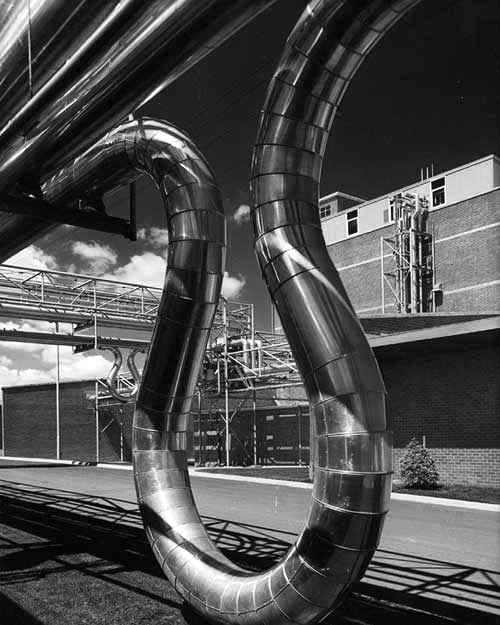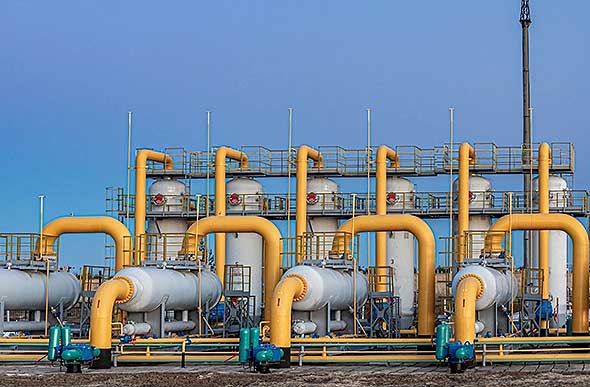 |
Thermal expansion - Thermal stress |
Thermal expansion and the resulting thermal stress are key concepts in engineering and physics. They describe how materials expand or contract when exposed to temperature changes. Understanding these principles is essential for designing structures and systems that can withstand environmental fluctuations without failing.
What is thermal expansion?
As a solid material experiences an increase in temperature, the volume of the structure is ultimately impacted by increasing, a phenomenon known as thermal expansion. This process results from heat's ability to increase a material's kinetic energy.
Within solids, molecules are typically located in close proximity to one another, contributing to the defined shape of the structure. As the temperature rises, molecules begin to vibrate at a more rapid speed and push away from one another.
This increased separation between the individual atoms causes the solid to expand, thus increasing the volume of the structure.
During expansion, thermal stresses occur
With this volumetric enlargement, the components of a solid undergo greater stress levels. Thermal stresses can have a significant effect on the strength and stability of a structure, potentially causing cracks or fractures in certain components. Such failures compromise the overall design of the structure, leading to possible weakening and deformation.
Residual stress in welding is just one example. Welding involves forming a bond between metal parts by melting their surfaces and placing them on top of each other so that they are joined together when the materials solidify again. As the assembled structure cools, some parts of the weld tend to contract more than others due to different thermal expansion coefficients. This causes residual stresses in the area of the weld.
Thermal expansion in design
In the design process, it is important to consider thermal expansion and the resulting stresses to achieve optimum performance. This requires examining the relationship between heat transfer and structural mechanics, focusing on structural materials and displacement fields.
Compensators are often used in the design of buildings, bridges and railways to eliminate internal stresses due to a temperature rise. These separations at the centre of the structure compensate for movement and are vital for relieving thermal stress on structural members and help control cracking in structures.
In some cases, however, thermal expansion, and the resulting stress, is embraced in design. In a process known as shrink fit, an external part is heated to the point of expansion with the aim of joining it to the internal part. This heating technique forms a bond and creates an immovable connection between the two individual parts. This bond becomes stronger as the two parts reach the same temperature.
Understanding the coefficient of linear expansion




Why Thermal Stress Matters
In industries such as aerospace, aircraft components and spacecraft have to withstand rapid and extreme temperature changes. Thermal stress is also a constant in power plants and solar panels, due to high operating temperatures.
Thermal expansion is also used in useful ways, such as in thermostats and bimetallic strips, where controlled expansion causes mechanical movement. Engineers must carefully design systems to accommodate or exploit thermal stress.

Expansion Loop in the Low Pressure Steam Pipe,
Kodak Factory, Coburg, 1964
Related Post(s)

Piping Engineering is a specialized discipline of Mechanical Engineering that deals with the design of piping and layout of equipment and...